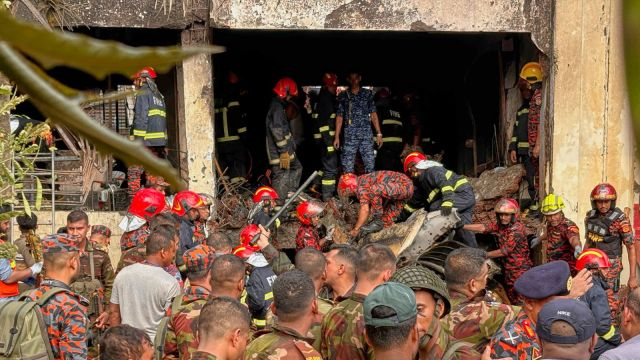Culture Under Siege: Preserving Yemen’s Identity Amid Conflict
- Khoshnaw Rahmani

- 1 day ago
- 5 min read
Khoshnaw Rahmani, Jadetimes Staff
K. Rahmani is a Jadetimes news reporter covering culture.

1. Global Support Rallies for Yemen’s Heritage
In early 2025, a wave of high-profile preservation efforts underscored the international commitment to safeguarding Yemen’s cultural identity. The U.S. Ambassadors Fund for Cultural Preservation (AFCP) opened a call for proposal round, offering grants up to USD 500,000 for emergency restoration of archaeological sites, museum collections, and traditional expressions. Simultaneously, the U.S. Embassy in Yemen announced twin initiatives: stabilizing Taiz’s historic Al-Qahira Castle and standing up a law-enforcement unit to curb artifact trafficking2. UNESCO and the European Union launched a new phase of their “Cash for Work” programme, pledging to employ 8,000 urban youth in heritage rehabilitation across Sana’a, Shibam, Zabid, and Aden. These coordinated interventions offer a lifeline to monuments and manuscripts under siege.
2. Yemen’s Cultural Legacy: Three Millennia of Artistry and Architecture
Yemen’s cultural heritage traces back over 3,000 years to the incense-trading Sabaean and Himyarite kingdoms, whose dam at Ma’rib irrigated desert plains and fueled a civilization celebrated by Herodotus and Pliny. Islamic dynasties bequeathed the tower-houses of Sana’a’s Old City—UNESCO-listed for its 2,500-year continuous habitation—and the 16th-century mud-brick “Manhattan of the Desert” at Shibam5. Coastal Zabid’s network of 86 mosques and madrasas embodies medieval Islamic learning, while Socotra’s archipelago safeguards unique biodiversity alongside centuries-old marine traditions. Beyond sites, Yemen’s vibrant oral poetry, intricate silver filigree, and the qat-leaf social ritual weave communities together across highlands and coasts.
3. Destruction and Threats Since 2015: A Timeline of Loss
Civil war and foreign intervention since 2015 have decimated Yemen’s heritage:
2015: Dhamar Archaeological Museum destroyed, over 12,000 artifacts lost; airstrikes damage Shibam’s gates and Zabid’s souks
2017: Coalition bombing hits Marib Dam and Temple of Nakrah, injuring Bronze Age ruins
2018: UNESCO records 32 damaging incidents at protected sites; Yemen signs Safe Schools Declaration to shield cultural learning spaces
2023: US-Yemen Cultural Property Agreement enters force, imposing import restrictions on looted antiquities
2024: UNESCO/EU Cash for Work pilot saves over 6,000 youth jobs and restores buildings in four heritage cities
Each strike not only collapses stone and mortar, but erases the shared memories etched in Yemen’s social fabric.
4. Major Preservation Initiatives in 2025
4.1 U.S. Ambassadors Fund for Cultural Preservation (AFCP)
AFCP’s 2025 grant cycle prioritizes Yemen for projects in conservation, documentation, and preventive stabilization. Eligible proposals range from restabilizing mud-brick walls in Hadramawt to digitizing tribal oral-history recordings for posterity.
4.2 US Embassy Law-Enforcement Unit
Backed by the Cultural Property Agreement Implementation Grant, this unit trains Yemeni police and customs officials to identify and intercept smuggled manuscripts and artifacts, forging ties with INTERPOL and neighboring countries to stem illicit flows.
4.3 UNESCO-EU “Cash for Work” Youth Programme
Building on a 2018–2022 pilot, the next phase will engage 8,000 young Yemenis in rehabilitating over 500 structures in Old Sana’a, Shibam, Zabid, and Aden, merging livelihood creation with heritage renewal.
4.4 UNESCO-Yemen Ministry Collaboration
Joint damage assessments and emergency interventions focus on the three endangered World Heritage cities, while surveys of Hadramawt’s Dân music aim to register it on the Intangible Heritage lists.
5. Case Study: Reviving Al-Qahira Castle in Taiz
Perched atop Taiz’s rugged hills, Al-Qahira Castle symbolizes resistance and learning. Damaged by shelling and looting, its museum lay in ruins until late 2024, when the AFCP awarded USD 500,000 for structural stabilization, wall consolidation, and exhibit reconstruction. Community workshops now train locals in traditional masonry and curatorial practice, ensuring that restoration skills reside within Taiz itself. As stones realign, the castle museum prepares to host manuscripts and 19th-century Qur’anic scripts reclaimed from black-market networks.
6. Case Study: Alsultania Library’s Manuscript Renaissance
Mukalla’s Alsultania Library, founded in 1925, sheltered over 10,000 rare volumes until neglect and climate extremes ravaged its collection. In March 2025, Takween Cultural Club—backed by Cultural Emergency Response and the Whiting Foundation—stabilized 3,000 fragile manuscripts, digitized texts, and installed climate controls, shelving, and power backups. Over 800 community members gained hands-on training in bookbinding, archiving, and digital cataloguing, transforming the library into a vibrant research hub with 600 percent visitor growth in six months.
7. Centralizing Yemen’s Manuscript Heritage
On June 23, 2025, Yemen’s General Authority for Antiquities and Museums transferred 75 rescued manuscripts—27 seized from traffickers and 48 from the National Museum—to Sana’a’s dedicated Manuscripts House. Under Minister Ali Al-Yafei’s supervision, a technical team began electronic documentation, restoration, and public-awareness campaigns, urging citizens to surrender privately held treasures before they fall irretrievably into illicit markets.
8. Grassroots and Digital Engagement
Beyond monuments, preservation lives in community action and technology. The UNESCO-EU programme’s virtual-reality tours immerse youth in gone-but-not-forgotten Old Sana’a streets, while the Marib Data Collective crowdsources geolocations of damaged sites, feeding a shared heritage atlas. Local councils in Taiz suburbs elect members to oversee water-mill repairs near archaeological remains, tying daily life to the stewardship of the past.
9. Legal and Diplomatic Framework
Yemen’s accession to the 1954 Hague Convention and signature of the 2023 US-Yemen Cultural Property Agreement strengthen its legal arsenal. ICOMOS’s Red List of endangered Yemeni artifacts guides customs and auction houses worldwide, while UNESCO’s Endangered Archaeology in the Middle East & North Africa (EAMENA) project collaborates on satellite monitoring of site damage. Yet enforcement gaps and political fragmentation require continued international solidarity.
10. Comparative Lens: Heritage Under Fire in Syria and Iraq
Like Yemen, Syria and Iraq endured calculated devastation of cultural heritage—Palmyra’s temples and Mosul’s ancient walls—prompting similar “save-the-past” coalitions. Syria’s Emergency Red List (2012) and Iraq’s National Museum rebuild (2022) parallel Yemen’s AFCP and UNESCO-EU interventions. However, Yemen’s novel fusion of youth employment, digital mapping, and legal accords offers a pioneering model for conflict-zone preservation.
11. Timeline: Key Milestones in Yemen’s Heritage Preservation
Year | Milestone |
2000 | Ma’rib Dam restoration project launched by Yemeni Antiquities Authority |
2004 | Socotra Archipelago inscribed on UNESCO World Heritage List |
2015 | Dhamar Museum destroyed; Old Sana’a damaged by airstrikes |
2018 | UNESCO-EU “Cash for Work” pilot begins in four heritage cities |
2020 | UNESCO Safe Schools Declaration signed; Al-Qahira Castle emergency assessment completes |
2023 | US-Yemen Cultural Property Agreement ratified |
Mar 2025 | Takween restores 3,000 manuscripts at Alsultania Library |
Jun 2025 | 75 manuscripts handed to Manuscripts House in Sana’a |
Jul 2025 | AFCP invites Yemen proposals; UNESCO-EU extends youth heritage employment initiative |
12. Challenges Ahead: Fragility and Opportunity
Persistent airstrikes, fractious local governance, and extreme weather imperil Yemen’s heritage. Looters exploit lawless zones, while underfunded museums lack basic climate controls. Yet the synergy of AFCP funding, UNESCO’s technical expertise, EU employment schemes, and local passion reveals a path forward: if Yemen can weave cultural preservation into economic revival and youth engagement, its identity will survive and flourish.
13. Conclusion: Heritage as a Beacon of Resilience
Yemen’s monuments and manuscripts embody a civilization at the crossroads of Africa, Arabia, and the Indian Ocean. Preserving them amid conflict is both an act of defiance and a lifeline for national identity. Through coordinated global grants, legal frameworks, grassroots restoration, and digital innovation, Yemen’s cultural guardians are writing a new chapter—one where the past guides the present towards a stable, inclusive future.










































Comments